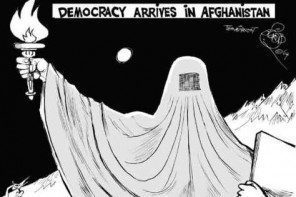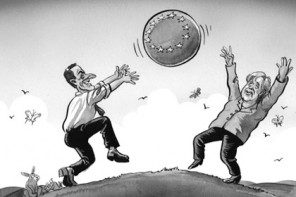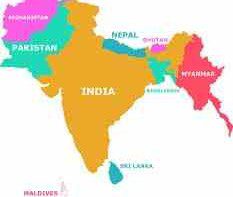Scholars argue that Nepal possess limited geopolitical importance of its own. Adopting strategic options like Balancing and Bandwagoning would be too risky for putting its sovereignty at the hands of others. Despite, its position for being situated between two aspiring global powers, namely India and China, and for qualifying as both buffer and landlocked state requires critical attention. Indian and Chinese involvement in Nepal focused mainly not on Nepal but on countering each others’ influence in Nepal. Recently the focus moved a bit toward economic development but both the states never ceased totally from interfering on domestic political issues of Nepal.
The recent unfolding events in Nepal have again spurred the necessity to give a fresh appraisal. It was predicted, or at least hoped, that the abolition of monarchy in Nepal will bring some qualitative change for its people and new governments will counter the idea of using Nepal as strategic entrepôt. The reality depicts a different picture after eight years of constant political ups and downs. To put in simpler terms, the recent crisis stemmed from adoption of new constitution and subsequent unofficial blockade by India.
Historical Background: Factors contributing to crisis of governance and sovereignty
The present crisis has a historical underpinning. Nepalese people had to walk a long way to reach at the present multiparty democratic system of governance. If we examine the historical facts we will be able to grasp the nature of current problem. For Nepal, nuanced maneuver of maintaining strategic neutrality and playing China and India cards, with regards to each other, to suit its interest had never been easier.
Nepal’s desire for sovereignty and non-interferences in the domestic political affairs has run counter to Indian and Chinese aspirations. Both the aspiring global powers consider it as own sphere of influence. While China emphasizes ethno-cultural semblance between Tibet and people in the upper Himalayan region of Nepal, there India emphasizes the ethno-cultural similarities of India and people of the southern plain lands of Nepal. Nepal is important to China for Tibet issue and to India for providing a natural fortification against any instances of Chinese adventurism. Securitization of own territory has been achieved through continuous sacrificing of Nepal’s autonomy. Constitutional monarchy to federalism and adoption of a new constitution therefore had faced challenges from sub-continental paternalism by both the aspiring powers. The important earlier treaties and its terms and conditions are designed in a way by both China and India, largely reflected own desire to secure their respective interests. The ideology, migration, trade and economic gains, ethno-cultural ties with India and China also played a significant role in factionalism and the current crisis of power sharing and proper representation.
Crisis of Political Identity
A number of political parties, whose orientation is different from each other, emerged when constitutional monarchy paved the way for federalism. With this came factionalism, leadership clashes, lack of internal democracy, problems of land reforms, poor infrastructural development, corruption etc. All this contributed to a broader problem of identity crisis of the political parties. This again perplexed due to absence of any clear focused and coherent foreign policy objectives. Nepal’s idea of federalism is dogged by some challenges like ethnicity, regional belongingness of the people, language, small areas to run federalism.
Domestic crisis of future direction of nation-building is again perplexed by ethno-cultural and geographical distribution of population. India fears that the newly adopted constitution will fail to ensure the proper political representation of the Madhesis, the people leaving at relatively plain plateaus of the southern part of Nepal, geographically at proximity of Bihar of India. This, India fears, has serious repercussions for its internal security and national interests, as it would uphold the relative power of the political elites of Kathmandu, and the Maoists and their ideology. This fear is not unfounded, as the Maoists promises of proper representation, has not been and will not likely be ensured through the adoption of newly devised constitution. Any uneasy development in Nepal and too much Indian interferences in internal affairs of Nepal is also a challenge for China’s control of Tibet. Though, the crisis is entirely domestic in nature, yet it has serious implication for India and China as well.
The present crisis : its nature, involved actors and Indian response
The crisis evolved around the struggle between political elites of the capital Kathmandu and supporters of ‘One Madhes-One Pradesh’ belonging to different peripheral regions of Nepal. Political elites of the hill, the upper caste Hindus constituting 15 percent of the population, while marginalized Madhesis, Tharus and Janajatis have been the primary actors of this crisis.
After seven years of the departure of constitutional monarchy, Nepal adopted a new constitution on September 20, 2015. The new constitution is likely to bring change the Hindu monarchy to a secular democracy, which displeased India. The proposed federal structure is aimed for the devolution of power from the center but the ‘internal borders will leave some historically marginalized groups under-represented in parliament’ , particularly the Madhesis in Terai, Tharus in the west and the Janajatis in eastern Nepal. The new federal structure divided Nepal into seven administrative divisions, which also divided the Madhesis into separate divisions, created the discontent instead of accepting federal decentralized system governance.
While the constitution was going through drafting process and after it was made public India had strong reservations for seven provisions and asked to address the grievances of the Madhesis and the constitution. Nepal hurriedly endorsed the document and without addressing Indian discontent. This angered India and was responded with an unofficial blockade lingering for more than a month. It is to be noted that Nepal is dependent on India for its essential goods and those pass through Nepalgonj, Birgonj, Janakpur and Biratnagar border points. For it geographical features Nepal has now discovered herself in a maze which seems very difficult to get out.
The month-long blockade had brought devastating effects on Nepal, particularly in energy sectors. China played a very limited role and is kind of playing the soft isolation policy. China cleared her position as not “anti-Madhesi and believes in a stable Nepal” . China is supporting Nepal with supplying essentials as the blockade continues.
Conclusion
Anti-Indian feeling runs amok and fear of ‘Sikkimization’ has perplexed this conundrum. The fiasco of devolution of governance, of interferences on sovereignty and addressing the discontents of the marginalized people is likely to be tangled for quite some time. Indian considers Himalaya as a natural ‘defense line of the northern frontier and regarded Nepal as on essential part of India’s security system’ .
This can only be achieved if a greater degree of non-interferences in the domestic political affairs is ensured from both China and India. An operational buffer may be a useful way for these aspiring nations for a peaceful and healthy cooperation in the region and beyond. The recent sub-regional cooperation initiatives are less likely to produce commendable outcomes in future if this crisis continues.
Relevant: THE UNFORTUNATE HISTORY OF NEPAL’S DEADLY PLANE CRASHES
Sources
- The Daily Star: Lebanon, ‘Nepal adopts new constitution amid protests’, available at: http://www.dailystar.com.lb/News/World/2015/Sep-20/315963-nepal-adopts-new-constitution-amid-protests.ashx, accessed on 9 December, 2015.
- Mahmood Hasan, ‘Delhi plays “Big Brother” to Nepal’, The Daily Star, 19 October 2015.
- Deeptima Shukla, ‘INDIA-NEPAL RELATIONS : PROBLEMS AND PROSPECTS’, The Indian Journal of Political Science, Vol. 67, No. 2 (APR.- JUNE, 2006), pp. 355-374.
The writer is a Lecturer in the Department of International Relations, University of Dhaka.






